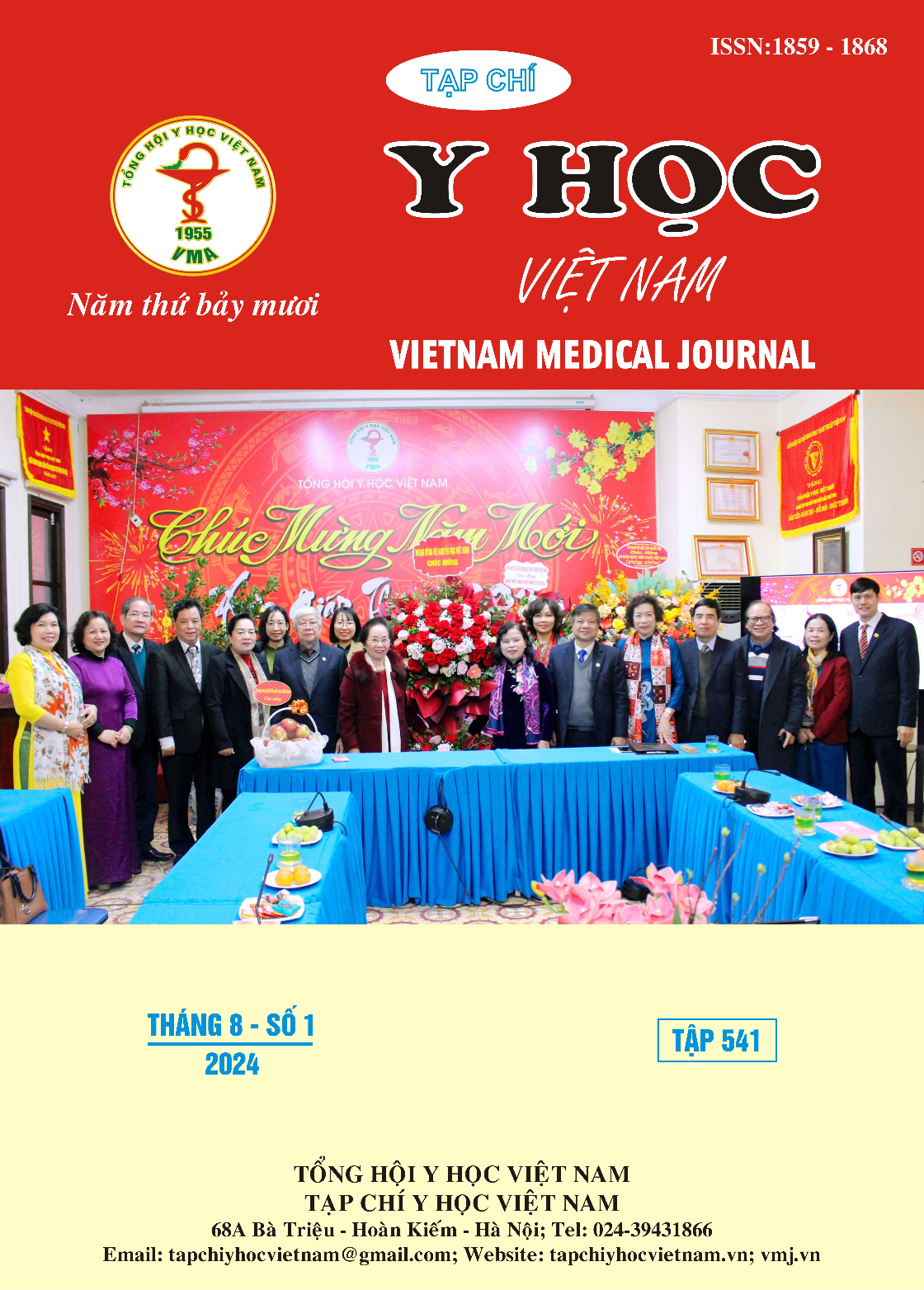SURVEYING THE CONCENTRATION OF PLASMA HEPCIDIN IN PATIENTS WITH END-STAGE CHRONIC RENAL DISEASE
Main Article Content
Abstract
Objectives: To evaluate plasma Hepcidin concentrations and its relation with some clinical and subclinical indicators in patients with end-stage chronic renal disease (ESRD). Subjects and methods: A cross-sectional, descriptive study on 157 patients with end-stage chronic renal disease and 54 healthy controls matched for age and gender at 103 Military Hospital from January, 2022 to December, 2023. All above patients had measured plasma Hepcidin by ELISA method. Results: The concentration of plasma Hepcidin in the group of patients 3,14 (2,17 – 11,05 ng/mL ) was higher than in the control group 2,80 (1,27 – 3,86 ng/ml), p < 0,005. Up to 35,0% of patients had elevated Hepcidin levels compared to the control group. The rate of Hepcidin elevation was 40,9% in the dialysis group and 19,0% in the non-dialysis group, with p < 0,05. The rate of increased plasma Hepcidin levels was 47,1% in the group with no residual urine, higher than the 21,4% in the group with residual urine, with p < 0,05. Plasma Hepcidin levels were inversely correlated with Hemoglobin levels (r = -0,207, p < 0,01), Hematocrit levels (r = -0,166, p < 0,05), and MCHC (r = -0,238, p < 0,005). The concentration and rate of increased Hepcidin levels in the group with elevated CRP and iron overload were higher than in the groups without elevated CRP and without iron overload, with p < 0,05. Conclusion: Plasma Hepcidin levels are elevated in patients with end-stage chronic renal disease. Plasma Hepcidin levels are associated with iron overload, increased CRP, and residual urine. Meanwhile, it is negatively correlated with red blood cell count.
Article Details
Keywords
End-stage renal disease (ESRD), Hepcidin, Anemia
References
2. Portolés, J., et al (2021), Anemia in Chronic Kidney Disease: From Pathophysiology and Current Treatments, to Future Agents. Front Med (Lausanne), 8: p. 642296.
3. KDIGO (2012), Clinical Practice Guideline for anemia in chronic kidney disease. Kidney International, 2: p. 279-335.
4. Ganz, T. and E. Nemeth (2016), Iron Balance and the Role of Hepcidin in Chronic Kidney Disease. Semin Nephrol,36(2): p. 87-93.
5. Ueda, N. and K. Takasawa (2018), Impact of Inflammation on Ferritin, Hepcidin and the Management of Iron Deficiency Anemia in Chronic Kidney Disease. Nutrients,10(9).
6. Van der Weerd, N.C., et al (2012), Hepcidin-25 in chronic hemodialysis patients is related to residual kidney function and not to treatment with erythropoiesis stimulating agents. PLoS One, 7(7): p. e39783.
7. KDIGO (2012), Clinical Practice Guideline for the Evaluation and Management of Chronic Kidney Disease. Kidney-international, 3: p. 5-8.
8. Rubab, Z., et al (2015), Serum hepcidin levels in patients with end-stage renal disease on hemodialysis. Saudi J Kidney Dis Transpl, 26(1): p. 19-25.
9. Sany, D., A.E. Elsawy, and Y. Elshahawy (2014), Hepcidin and regulation of iron homeostasis in maintenance hemodialysis patients. Saudi J Kidney Dis Transpl, 25(5): p. 967-73.
10. Samouilidou, E., et al (2014), Serum hepcidin levels are associated with serum triglycerides and interleukin-6 concentrations in patients with end-stage renal disease. Ther Apher Dial, 18(3): p. 279-83.


